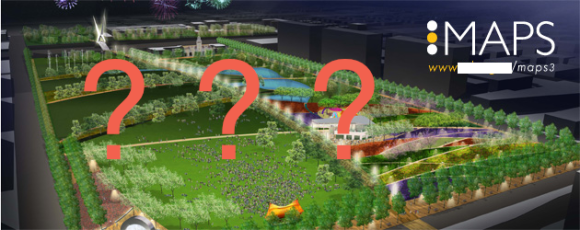As we previously mentioned on Oct 21, TXDOT has about $70 million dollars to give out as part of their State Transportation Enhancement Program, or STEP. Denton city planning staff doesn’t have any shovel-ready bike/pedestrian proposals, and so they won’t be applying for the STEP money this year.
However, tonight’s city council meeting includes consent agenda items D and E which would allow Denton to apply for STEP money for two bike/pedestrian projects totaling about $2.25 million in cost, for which the city must pay 20%.
D. Consider approval of a resolution of the City Council of the City of Denton, Texas, certifying funding and support for the 2009 Statewide Transportation Enhancement Program Nomination Form with the Texas Department of Transportation, authorizing the City Manager to submit an application to receive funding to construct the Hickory Street corridor and entertainment district project under the program and, if the grant is approved, to execute the grant agreement and take other actions necessary to implement the grant; and providing an effective date. The Mobility Committee recommends approval (3-0).
E. Consider approval of a resolution of the City of Denton, Texas, certifying funding and support for the 2009 State Wide Transportation Enhancement Program nomination form with the Texas Department of Transportation, authorizing the City Manager to submit an application to receive funding to construct the Cooper Creek Bike and Pedestrian Trail Project under the program and, if the grant is approved, to execute the grant agreement and take other actions necessary to implement the grant; and providing the effective date. The Mobility Committee recommends approval (3-0).
The first item is a call for significant sidewalk improvements on Hickory St, which the city has sought to revitalize for several years now. They applied previously in 2006 when the state funding was cut, and as such, they surely had the plans ready to resubmit.
Linda Ratliff, director of Economic Development writes:
The proposed project will connect the historic Courthouse on the Square, the planned passenger rail platform and Downtown Transit Center and the University of North Texas. The Hickory Street Corridor and Entertainment District will begin at Carroll Boulevard and extend east to Elm Street, will exclude the block from Elm to Locust, and will then continue from Locust Street to the proposed multimodal transit station at Railroad Road. All of the existing sidewalks within both sections of the project will be removed and replaced with 11’ concrete sidewalks edged by a brick detail 1-2 feet in from the curb. Pedestrian lighting is proposed throughout the project, as are trashcans, benches, bike racks, street trees, landscaped corner beds and flowerpots at various intersections. An irrigation system will also be installed along the length of the project.
The current three driving lanes will be reduced to two lanes approximately 12’ wide. Angle-in parking and a possible bike lane may be incorporated following the recommendations of the Downtown Implementation Plan study.
The text of the actual application to NCTCOG reads less ambiguously when mentioning the bike lane:
The South side of the street will be devoted to an 8′ bike lane.
Answering the “Project Use and Benefits” section, Denton makes the case for connecting UNT/TWU/downtown via pedestrian and bicycle access:
The University of North Texas, Texas Woman’s University, downtown and the future transit center are not fully connected. People in one center cannot easily move to the other. Establishing effective linkages depends on creating a pedestrian and bicyclist friendly environment.
It’s a shame that the tabled Oak/Hickory bike lane proposal isn’t applicable for the STEP program, because it would nicely compliment this Hickory STEP fund request.
Item E on the consent agenda asks for about $300K in STEP funds for a 1.4 mile paved non-road trail that spans north Denton
This project is viewed as an urgent need proposal to connect the existing Cooper Creek Trail at Evers Park extending northwestward into North Pointe Park along Cooper Creek at Fallmeadow Drive and continuing to the University of North Texas School of Engineering campus. This will accommodate neighborhood needs for a safe route to school and park facilities. The project includes an eight foot wide by 7,100 linear foot concrete paved trail and a 75′ linear foot prefabricated steel span pedestrian bridge across the creek.
The primary beneficiaries of this project will be two new growing neighborhoods with many families who need a pedestrian friendly way and safe route to school and parks. The proposed extension will provide new opportunities for the North Pointe and McKamy-Evers neighborhoods to access the elementary school and Evers Park.

Unfortunately, the Western end of the proposed trail is not near the actual entrance to the UNT Discovery Park campus. The campus is surrounded by a barbed wire fence, and the only entrance is at the south end facing Elm/Hwy 77. Hopefully this will not be a “Trail to Nowhere”. I hope the city comes up with a similar plan to provide safer passage from downtown to Discovery Park, as cyclists and pedestrians still have to move along the 55mph shoulder-less highway to get to work/school.















